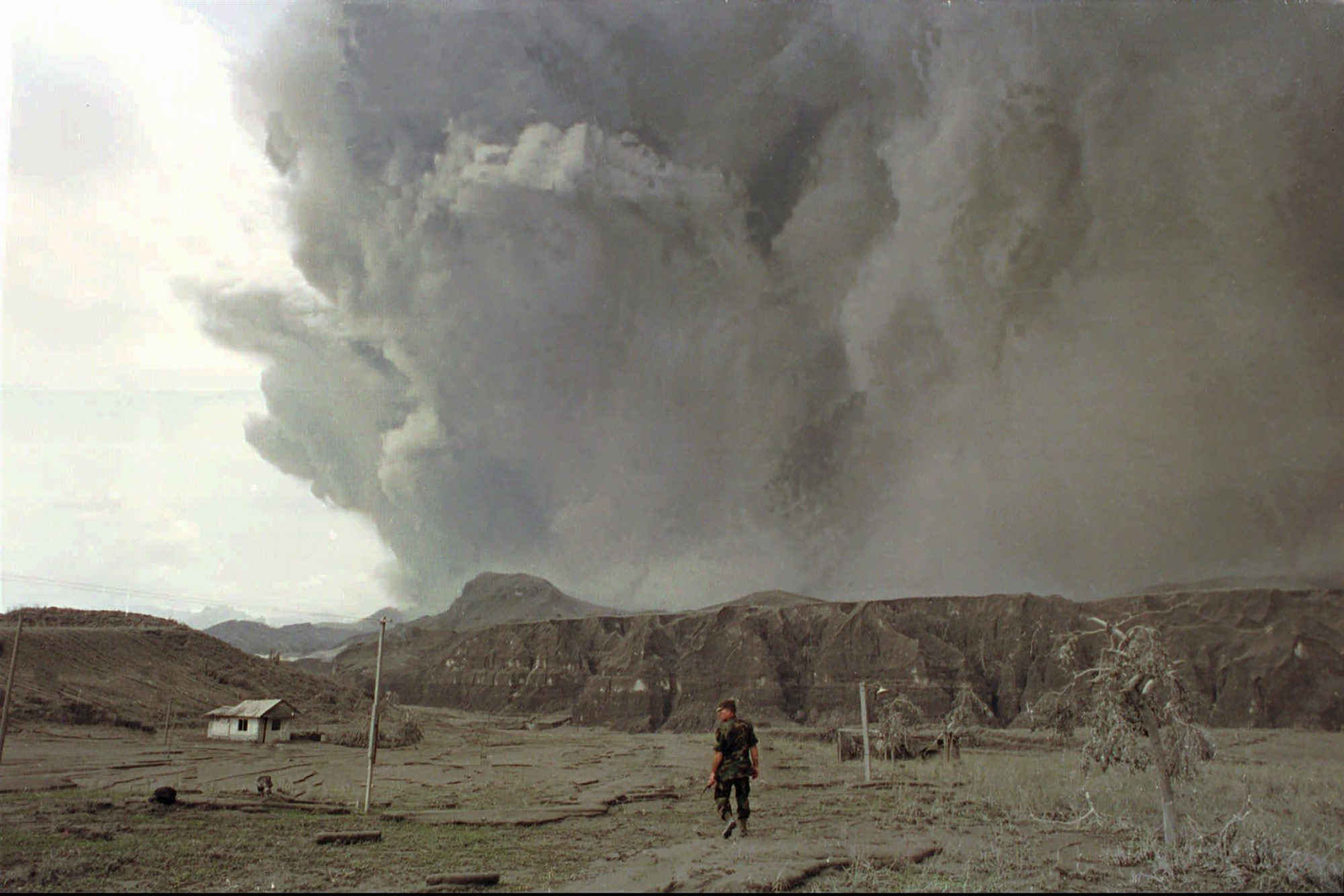
'If solar geoengineering is as good as what is shown in these models, it would be crazy not to take it seriously'
Scientists plan to mimic the effects of a massive volcanic eruption in a bid to tackle global warming.
Plans to geoengineer the atmosphere by blocking out sunlight have been floated before, but an experiment launched next year by Harvard researchers will be the first to test the theory in the stratosphere.
The team will use a balloon suspended 12 miles above Earth to spray tiny chalk particles across a kilometre-long area, with the intention of reflecting the Sun's rays away from the planet.
In doing so, they will attempt to replicate on a small scale the eruption of Mount Pinatubo in the Philippines in 1991.
During this event, the volcano spewed 20 million tonnes of sulphur dioxide into the stratosphere, creating a haze that cooled the planet by 0.5C for around 18 months - returning the Earth to its pre-industrial temperature.
The scientists argue that replicating this effect on a large scale could provide the planet with respite from global warming, stopping sea ice from melting and protecting coral from bleaching.
As efforts to tackle climate change appear ever more desperate, geoengineering has emerged as an increasingly appealing prospect - albeit a controversial one that has drawn criticism from scientists and environmentalists.
Some have suggested that solar geoengineering could have profound complications, for example wiping out crops, while others argue it distracts attention from cutting fossil fuel emissions.
However, team member and experimental physicist Professor David Keith said their analysis suggests ultimately the benefits of such attempts may well outweigh the negative impacts.
"Despite all of the concerns, we can't find any areas that would be definitely worse off," he told Nature.
"If solar geoengineering is as good as what is shown in these models, it would be crazy not to take it seriously."
Either way, the scientists hope their Stratospheric Controlled Perturbation Experiment (Scopex) will shed some light on how effective such a strategy would be in reality.
After releasing the chalk dust, the motorised balloon would then re-enter the cloud and measure how it disperses in the air and affects the chemistry of the stratosphere.
The team are currently searching for the ideal location in the southwest US in which to conduct the experiment, which has been partly funded by Bill Gates of Microsoft.
In November, a separate study concluded solar geoengineering could be "remarkably inexpensive" as a means of offsetting humanity's greenhouse gas emissions.
However, with the potential knock-on effects to the ozone layer and local weather conditions still largely unknown, scientists have emphasised the need for careful experiments before any bold steps are taken.



Comment: Scientists plan to fight global warming by dimming the sun See also: